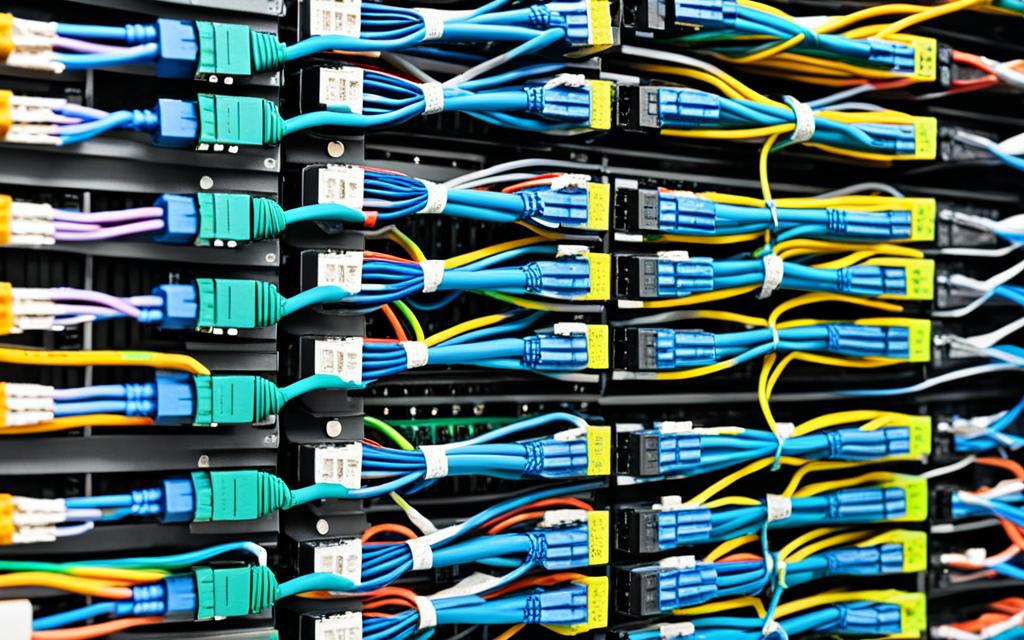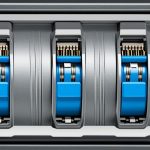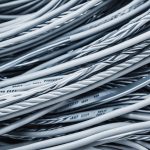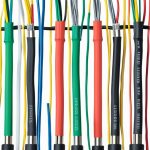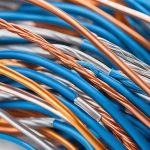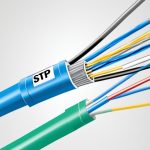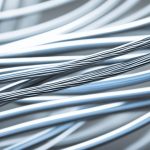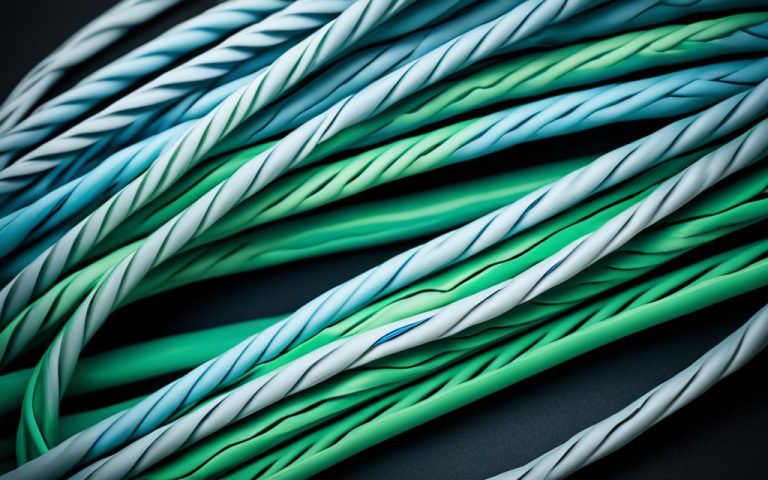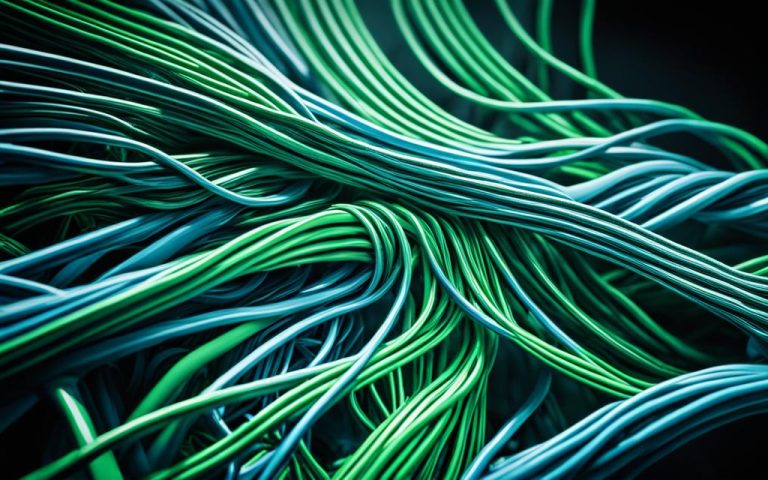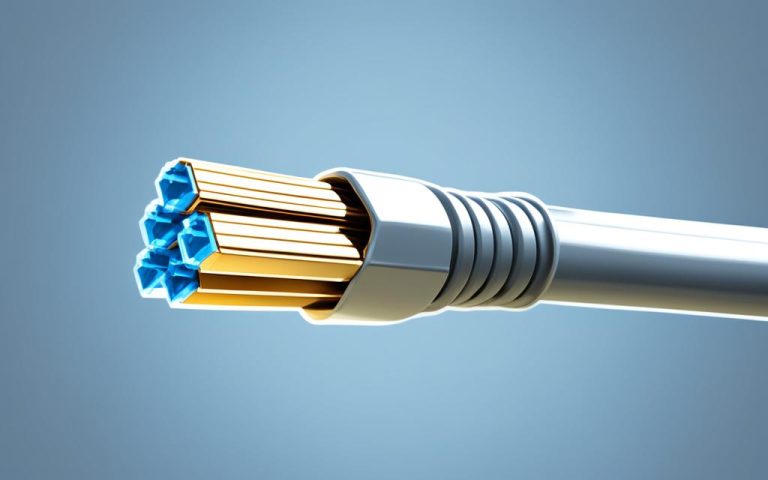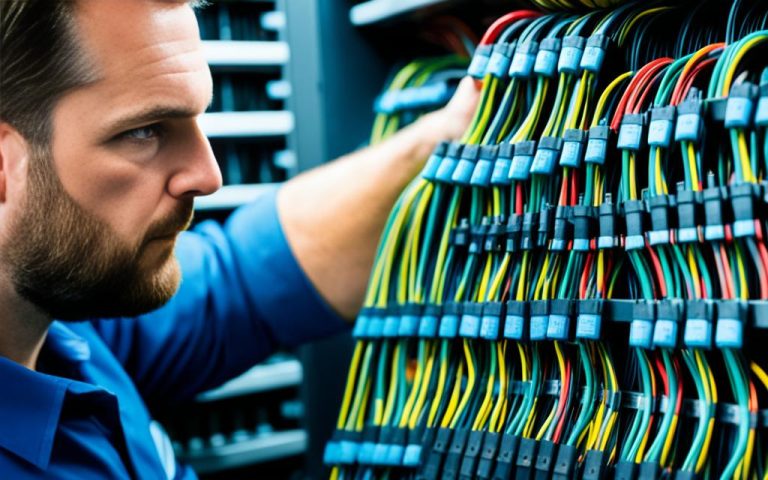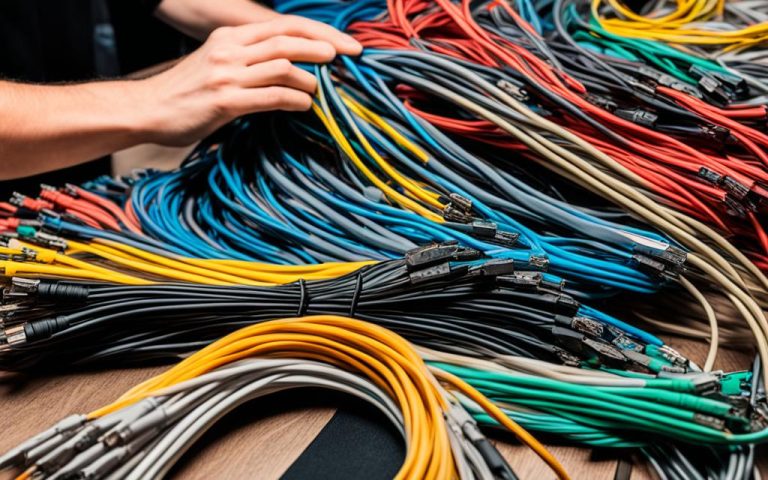When it comes to LAN wiring and network connectivity, twisted pair cables are an essential component. These reliable cables play a crucial role in ensuring smooth data transmission within various network setups. Let’s take a closer look at the key aspects of twisted pair cables and their importance in LAN setups.
Twisted pair cables are composed of pairs of twisted wires specifically designed to reduce crosstalk and electromagnetic interference. They are widely used in LANs, Ethernet networks, DSL lines, telephone lines, and security camera systems. These versatile cables come in different categories, such as Cat5e, Cat6, Cat6A, and Cat8, and can be either shielded (STP) or unshielded (UTP).
Whether you are setting up a small office network or a large-scale enterprise infrastructure, understanding the essentials of twisted pair cables is crucial for achieving reliable network connectivity. In the following sections, we will explore what twisted pair cables are, their various uses, different categories, and the differences between UTP and STP cables. By the end of this article, you will have a comprehensive understanding of how twisted pair cables can optimize your LAN setup for performance and reliability.
What is a Twisted Pair Cable?
A twisted pair cable is a type of cable that consists of pairs of wires used to transmit data. These wires are insulated conductors, typically made of copper, and they are twisted together to form a cable. The twisted pair configuration includes one conductor that carries the signal and another conductor that acts as a ground reference.
The primary purpose of twisting the wires is to reduce crosstalk and electromagnetic interference, ensuring reliable data transmission. This makes twisted pair cables an excellent choice for various applications, including local area networks (LANs), Ethernet networks, DSL lines, and telephone lines.
Twisted pair cables are widely recognized for their durability, affordability, and ease of installation. They come in different categories, such as Cat5e, Cat6, Cat6A, and Cat8, each with specific specifications and capabilities.
“The twisted configuration of the wires in a twisted pair cable minimizes crosstalk and electromagnetic interference, enhancing the overall performance and reliability of data transmission.”
To give you a visual representation of a twisted pair cable, take a look at the image below:
Comparison between Twisted Pair Cable Categories
| Category | Data Rate | Applications |
|---|---|---|
| Cat5e | Up to 1 Gbps | LANS, Ethernet Networks |
| Cat6 | Up to 10 Gbps | High-performance LANs, Data Centers |
| Cat6A | Up to 10 Gbps over longer distances | 10GBASE-T Ethernet, PoE Devices |
| Cat8 | Up to 40 Gbps | Data Centers, High-speed Networks |
As shown in the table, twisted pair cable categories offer varying data rates and are suitable for different applications. Selecting the right category of twisted pair cable is crucial to meet the specific requirements of your network setup.
Uses of Twisted Pair Cables
Twisted pair cables are versatile and widely used in various applications, providing reliable connectivity for different devices and systems. Let’s explore some of the common uses of twisted pair cables:
1. LANs and Ethernet Networks
In local area networks (LANs) and Ethernet networks, twisted pair cables play a crucial role in establishing connections between computers, switches, routers, printers, and other network devices. They enable data transfer and communication within the network infrastructure, ensuring seamless collaboration and resource sharing.
2. DSL Lines for Internet Connections
Twisted pair cables are extensively used in DSL (Digital Subscriber Line) lines to establish internet connections in residential and commercial settings. They provide the necessary connectivity between the modem and the telephone line, enabling high-speed internet access.
3. Telephone Lines for Voice Signals
For traditional telephone systems, twisted pair cables are the go-to choice for transmitting voice signals. By ensuring a reliable and interference-free connection, these cables facilitate clear and efficient communication between callers.
4. Security Camera Systems
Twisted pair cables are also utilized in security camera systems for the transmission of audio and video signals. They provide a reliable medium to connect surveillance cameras to the monitoring and recording equipment, enabling comprehensive security monitoring.
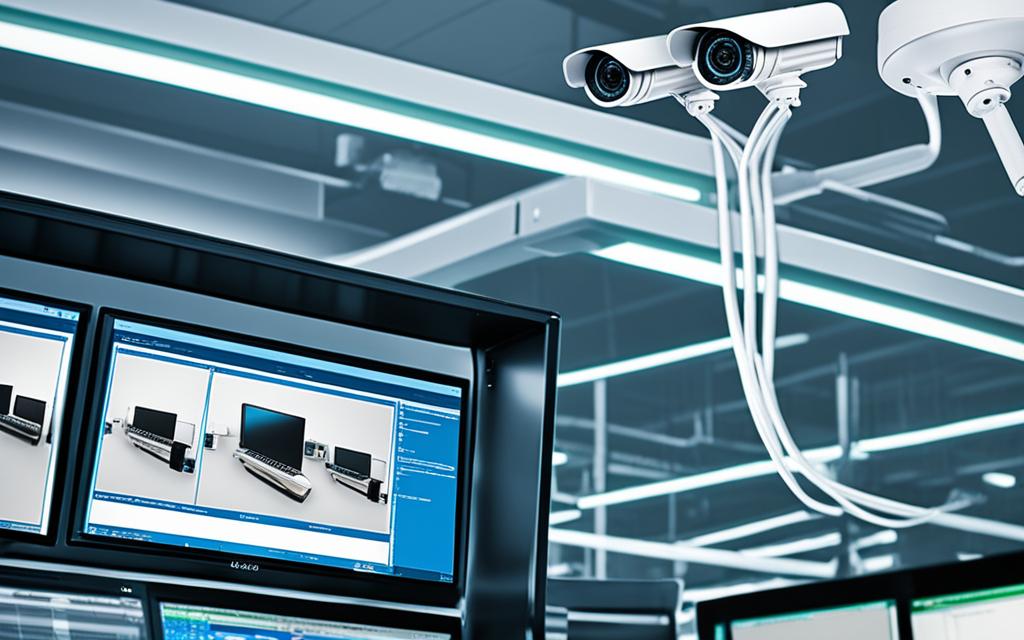
Categories of Twisted Pair Cables
Twisted pair cables are classified into different categories based on their data rates and applications. These categories include CAT 1, CAT 2, CAT 3, CAT 4, CAT 5, CAT 5e, CAT 6, CAT 6a, and CAT 7. Each category has its own specifications and is suitable for specific data rate requirements.
CAT 1
CAT 1 cables are mainly used for traditional telephone lines and do not support data transmission rates beyond voice signals. They are limited to less than 0.1 Mbps data rates.
CAT 2
CAT 2 cables were primarily used for Token Ring networks and are capable of data rates up to 4 Mbps. However, they are now considered outdated and rarely used.
CAT 3
CAT 3 cables are commonly used for Ethernet networks and can support data rates up to 10 Mbps. They are suitable for basic LAN setups and telephone lines.
CAT 4
CAT 4 cables can handle data rates up to 20 Mbps and were commonly used for Token Ring networks. However, like CAT 2 cables, CAT 4 cables have become less common and are now considered outdated.
CAT 5
CAT 5 cables are widely used in Ethernet networks and can support data rates up to 100 Mbps. They are suitable for most LAN setups and are more reliable than their predecessors.
CAT 5e
CAT 5e cables are an enhanced version of CAT 5 cables and can transmit data at speeds up to 1 Gbps. They provide better performance, reduced crosstalk, and improved signal quality compared to CAT 5 cables.
CAT 6
CAT 6 cables are designed for Gigabit Ethernet networks and can support data rates up to 10 Gbps at shorter distances. They offer better performance, reduced interference, and improved signal integrity.
CAT 6a
CAT 6a cables are an augmented version of CAT 6 cables, with improved performance and enhanced capabilities. They can transmit data at speeds up to 10 Gbps over longer distances, making them suitable for high-bandwidth applications.
CAT 7
CAT 7 cables are the highest category of twisted pair cables, designed for super high-speed Gigabit Ethernet. They can support data rates up to 10 Gbps over 100 meters and provide excellent noise immunity and signal integrity.
Here is a table summarizing the different categories of twisted pair cables:
| Category | Data Rate | Application |
| — | — | — |
| CAT 1 | Less than 0.1 Mbps | Traditional telephone lines |
| CAT 2 | Up to 4 Mbps | Token Ring networks |
| CAT 3 | Up to 10 Mbps | Ethernet networks, basic LAN setups |
| CAT 4 | Up to 20 Mbps | Token Ring networks |
| CAT 5 | Up to 100 Mbps | Ethernet networks, LAN setups |
| CAT 5e | Up to 1 Gbps | Enhanced Ethernet networks |
| CAT 6 | Up to 10 Gbps | Gigabit Ethernet networks |
| CAT 6a | Up to 10 Gbps | Augmented Gigabit Ethernet networks |
| CAT 7 | Up to 10 Gbps | Super high-speed Gigabit Ethernet |
Understanding the different categories of twisted pair cables allows network professionals to choose the right cable for their specific requirements, ensuring reliable data transmission and optimal network performance.
UTP vs. STP Cables
When considering twisted pair cables for your network setup, it is important to understand the key differences between unshielded twisted pair (UTP) cables and shielded twisted pair (STP) cables. Both UTP and STP cables serve their purpose in different scenarios, so let’s explore their characteristics and applications.
Unshielded Twisted Pair (UTP) Cables
UTP cables are the most commonly used type of twisted pair cables. They consist of four pairs of twisted wires without any additional shielding. The wires are insulated and twisted together in a specific pattern to minimize interference. UTP cables offer cost-effective and reliable connectivity solutions for various applications, including LANs, telephone wires, and Ethernet cables.
Shielded Twisted Pair (STP) Cables
STP cables, on the other hand, have additional shielding to provide enhanced protection against electromagnetic interference (EMI) and crosstalk. This shielding is typically made of a metallic foil or a braided metal mesh. STP cables are recommended for scenarios where there is a high risk of external interference, such as in industrial environments or areas with a significant amount of electrical noise.
Although STP cables offer superior noise protection, they come at a higher cost compared to UTP cables. The additional shielding makes STP cables thicker and less flexible, which can impact their ease of installation.
Here is a comparison table summarizing the differences between UTP and STP cables:
| Characteristics | UTP Cables | STP Cables |
|---|---|---|
| Noise Protection | Standard protection against EMI and crosstalk | Enhanced protection against EMI and crosstalk |
| Applications | LANs, telephone wires, Ethernet cables | Industrial environments, areas with high external interference |
| Cost | Affordable | Higher cost |
| Flexibility | Thin and flexible | Thicker and less flexible |
It is important to choose the right type of cable based on your specific networking requirements. While UTP cables are suitable for most standard installations, STP cables provide added protection in more challenging environments. Consider factors such as budget, potential interference, and installation constraints to make an informed decision.
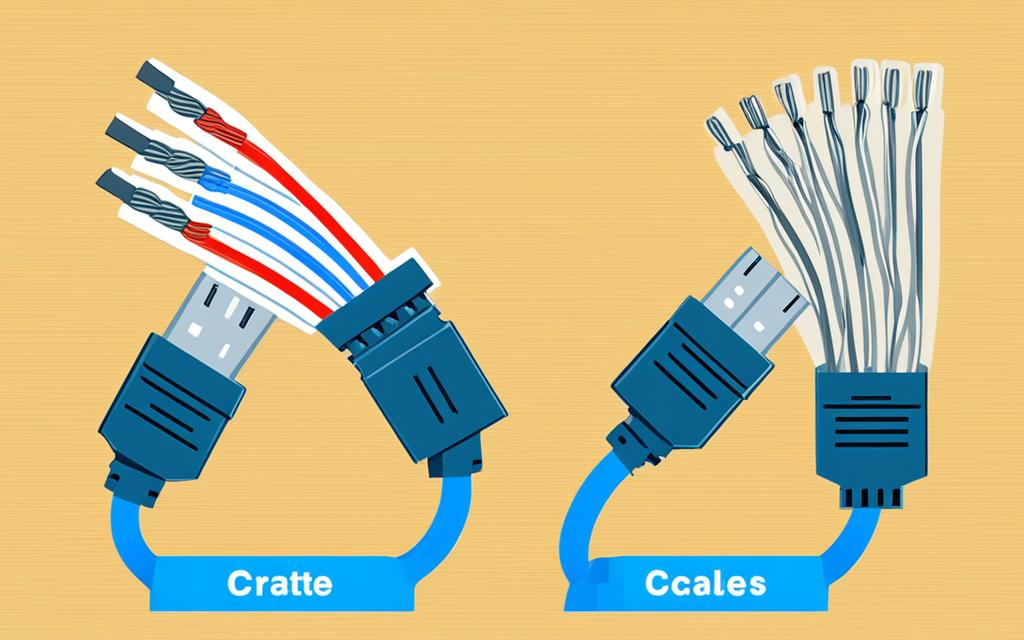
Differences Between Twisted Pair Cables and Coaxial Cables
When it comes to signal transmission, there are two main types of cables commonly used – twisted pair cables and coaxial cables. While both serve the purpose of transmitting signals, they differ in terms of their construction, noise protection, and bandwidth capabilities.
Twisted Pair Cables
Twisted pair cables are made up of pairs of wires that are twisted together, with each pair having its own insulation. The twisting of the wires helps to reduce electromagnetic interference and crosstalk, ensuring a reliable signal transmission. Twisted pair cables are commonly used in networking applications such as LANs, Ethernet networks, and telephone lines.
Some key characteristics of twisted pair cables include:
- Signal Transmission: Twisted pair cables transmit signals through pairs of wires.
- Noise Protection: The twisted configuration of the wires helps in minimizing electromagnetic interference and crosstalk.
- Bandwidth: Twisted pair cables have a lower bandwidth compared to coaxial cables.
Coaxial Cables
Coaxial cables, on the other hand, consist of two conductors – an inner conductor and an outer conductor, with a layer of insulation in between. The inner conductor carries the signal, while the outer conductor acts as a shield, providing excellent noise protection and reducing signal loss. Coaxial cables are commonly used in applications such as cable TV, satellite communications, and high-speed data transfer.
Here are some key characteristics of coaxial cables:
- Signal Transmission: Coaxial cables transmit signals through the inner conductor.
- Noise Protection: The outer conductor shields the inner conductor, providing superior noise protection.
- Bandwidth: Coaxial cables have a higher bandwidth compared to twisted pair cables, making them suitable for high-speed data transfer.
Overall, while twisted pair cables are thinner, less expensive, and easier to install, coaxial cables offer better noise protection and higher bandwidth. The choice between the two depends on the specific requirements of the application.
| Twisted Pair Cables | Coaxial Cables | |
|---|---|---|
| Signal Transmission | Pairs of twisted wires | Inner conductor |
| Noise Protection | Reduced electromagnetic interference and crosstalk | Outer conductor shielding |
| Bandwidth | Lower bandwidth | Higher bandwidth |
| Cost | Less expensive | Relatively expensive |
| Application | LANs, Ethernet networks, telephone lines | Cable TV, satellite communications, high-speed data transfer |
Conclusion
Twisted pair cables play a crucial role in LAN wiring, providing reliable data transmission in a variety of network setups. These cables are widely utilized in LANs, Ethernet networks, DSL lines, telephone lines, and security camera systems, offering versatility and scalability to network infrastructure.
By understanding the uses, categories, and differences between twisted pair cables, network professionals can optimize their LAN setups for enhanced reliability and performance. With different categories available, such as Cat5e, Cat6, Cat6A, and Cat8, and options for shielding, twisted pair cables offer flexibility to meet specific networking requirements.
Whether it’s connecting computers, switches, routers, printers, IP cameras, or PoE devices, twisted pair cables provide a dependable solution for seamless data transmission. Their twisted configuration minimizes crosstalk and electromagnetic interference, ensuring efficient communication between devices.
When it comes to LAN wiring and ensuring reliable data transmission, twisted pair cables offer a proven and trusted solution. Network professionals can rely on their performance and durability, making them an essential component in any network infrastructure.
FAQ
What are twisted pair cables?
Twisted pair cables are pairs of wires that transmit data. They consist of insulated conductors, typically made of copper, that are twisted together. One conductor carries the signal, while the other acts as a ground reference. The twisted configuration reduces crosstalk and electromagnetic interference, ensuring reliable data transmission.
Where are twisted pair cables used?
Twisted pair cables are commonly used in LANs, Ethernet networks, DSL lines, telephone lines, and security camera systems. They connect computers, switches, routers, printers, IP cameras, and PoE devices in LANs and Ethernet networks. Twisted pair cables are also utilized in DSL lines for internet connections and in telephone lines for voice signals. In addition, they are used in security camera systems for AV signal transmission.
What are the categories of twisted pair cables?
Twisted pair cables are classified into different categories based on their data rates and applications. The categories include CAT 1, CAT 2, CAT 3, CAT 4, CAT 5, CAT 5e, CAT 6, CAT 6a, and CAT 7. Each category has different specifications and can support varying data rates, ranging from less than 0.1 Mbps to 10 Gbps. CAT 7 is the highest category, suitable for super high-speed Gigabit Ethernet.
What is the difference between UTP and STP cables?
Twisted pair cables can be either unshielded (UTP) or shielded (STP). UTP cables have four pairs of twisted wires without any additional shielding. They are primarily used in LANs, telephone wires, and Ethernet cables. STP cables, on the other hand, have additional shielding to protect against electromagnetic interference and crosstalk. STP cables are recommended for scenarios with high external interference but are more expensive than UTP cables.
How do twisted pair cables compare to coaxial cables?
Twisted pair cables and coaxial cables are two different types of cables used for signal transmission. Twisted pair cables use pairs of twisted wires to reduce crosstalk and electromagnetic interference. Coaxial cables, on the other hand, have two conductors – an inner conductor and an outer conductor – providing better noise protection and higher bandwidth than twisted pair cables. Twisted pair cables are thinner, less expensive, and easier to install compared to coaxial cables.

